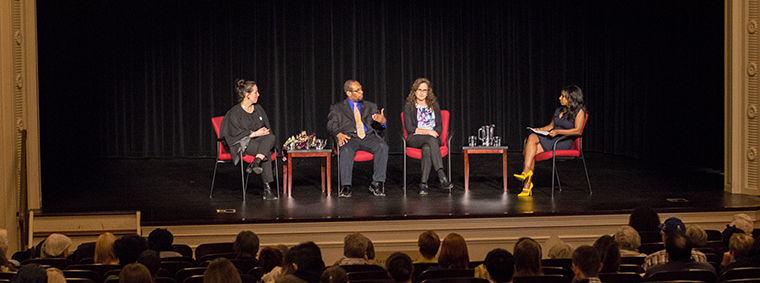Solving Chicago’s segregated political structure
March 7, 2018
Despite the absence of a majority racial group in Chicago, a clear, race-based political hierarchy dominates city politics, said Natalie Moore, a WBEZ South Side reporter, to a Chicago History Museum audience.
Moore moderated a Feb. 27 panel at the museum, 1601 N. Clark St., which hosted diverse voices surrounding the discussion of how segregation plays into Chicago politics.
“Residents, politicians and policy makers accept our racial segregation, our hierarchies and it’s rarely challenged,” said Moore, author of “The South Side: A Portrait of Chicago and American Segregation,” published in 2016.
The panel highlighted themes in a companion museum exhibit, “Race: Are We So Different,” running until July 15 and offering a look at the cultural, historical and biological aspects of race, as well as its fabricated social structures.
“Chicago has different race politics than most of the country,” said panel member Coya Paz Brownrigg, an associate professor at DePaul University’s Theatre School and artistic director of Free Street Theater. “The city seems literally built to maintain these structures.”
A 2017 report by the Metropolitan Planning Council ranked Chicago the fifth highest in combined racial and economic segregation out of the 100 largest U.S. metropolitan areas.
Residential segregation has driven segregated city politics, said panelist Alden Loury, director of research and evaluation at the Metropolitan Planning Council. Geographically segregated neighborhoods create a challenge for marginalized groups to collaborate and support a single candidate. Too often a single candidate cannot accurately represent issues faced in these fractionalized communities, Loury added.
This results in a distinct political hierarchy. “The hierarchy as it is today is: white, Latino and African American, and even below that—politically—the Asian community,” he said.
Equality can exist, even with Chicago’s segregated neighborhood structure, but it requires radical changes, Loury said.
Segregation does not prevent commonalities among the city’s marginalized groups, said panelist Nilda Flores-Gonzáles, a sociology professor at the University of Illinois at Chicago. The same issues often affect all marginalized people because they all live within the same power structure and need to recognize and discuss their commonalities, she noted.
“Creating spaces in which groups can come together and have these kind of conversations is when you can see some of these changes,” Flores-González said.
While these issues need to be addressed in order to build political solidarity, Paz Brownrigg said a key demographic in the discussion that should not be ignored is young people.
“Having these conversations with young people and early voters will have a big impact on our city,” Paz Brownrigg said.








